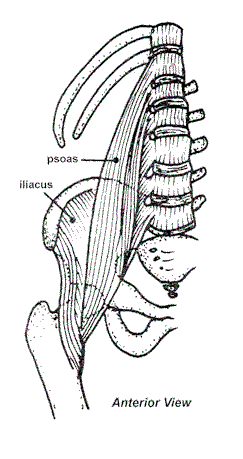Positive Health Online
Your Country

Every once in a while I come across a book which is relatively unknown, possibly out of print, and which has an important influence on my bodywork practise. One such book, which is, unfortunately, out of print, is You Don't Have To Ache, a Guide to Orthotherapy by Arthur A. Michele, M.D., Souvenir Press Ltd, London (1971). As far as I can tell, this book is not well known among bodyworkers, nor are the ideas of his book that widespread. And he has something very important to say. Dr Michele certainly has the basic credentials to write about pain. When he wrote this book, he had been in orthopaedic practise for 35 years and was Professor and Chairman of the Department of Orthopedic Surgery at New York Medical College; and he also taught at two other eminent teaching hospitals.The general thesis of the book is that muscle imbalance is the main cause of our aches and pains and poor posture, and that orthotherapy offers various tests to check for these imbalances and also various exercises to rebalance the body, removing the problems. The part of the book I found to be of most interest was the detailed discussion of the iliopsoas muscle. Here is a rather long and important quote which summarises his view of the iliopsoas:

"The Most Important Muscle Syndrome. The iliopsoas, one of the major muscle complexes of the body, is the key to most cases of muscle imbalance. In the diagram, the iliopsoas is striped with fine lines. It goes from the spine through the abdomen and over the brim of the pelvis to the inner part of the upper thigh. Its normal function is involved with the entire working of the back, the hips, and the pelvic area. You can see, therefore, that it is one of the main controllers of posture in the body. Because the iliopsoas affects movement of the body in such a wide area, it is the primary source of most muscle imbalance, even though other muscles may also be functioning improperly.
"Imagine what would happen if (for any one of a variety of reasons) this iliopsoas muscle was shorter than it should be. It could pull everything else out of kilter. It could cause a person to be round shouldered, have a slumped posture, or swayback. Or the short iliopsoas could pull on the femur – the thigh bone – where it attaches at the hip. When this happens, the abnormal strain on the thigh bone causes the upper leg to rotate outward. The lower leg turns also to compensate, twisting the two lower leg bone – the tibia and fibula – out of their proper relationship. The pulling produces a torsion effect, an outward twisting. . .
"The iliopsoas is just one muscle, but it affects a whole network of other muscles. The iliopsoas and these other muscles are interdependent, like the rowers in a crew race. If the iliopsoas muscle is improperly developed or weak, all of the other muscles on the team must work too hard to compensate so that there is a constant possibility of strain at every point.
"In fact, a short iliopsoas, by causing imbalance in all the other connected muscles, can result in every one of the following discomforts:
* Flat feet, bow legs, knock-knees, weak ankles. . .
* Tilting of the pelvis to one side. . .
* Distortion of the hip in newborn infants, often called congenital dislocation of the hip. . .
* Hip pain and limping. . .
* Pain in the chest. . .
* Weakening and subsequent fracture of the thigh bone of older people, often mistakenly blamed on a fall. . .
* Arthrosis of the knee. . .
* Arthrosis of the hip. . .
* Circulation problems. . .
* Poor functioning of internal organs. . .
* Fractures of the spine, or degenerative disorders of the spine. . .
* Pain, tenderness or stiffness of the spine.
* Herniated (slipped) intervertebral disc. . .
And plain, poor posture. . .
"It is almost unbelievable that a problem with this one muscle can be the hidden culprit that directly or indirectly leads to such varied ailments".
I know of no other book in the English language which explains in such detail the problems caused by a shortened or imbalanced iliopsoas. More importantly, just as Dr Michele's book is a neglected book, the iliopsoas has become neglected as a major cause of pain and postural problems. In a previous column in Positive Health (Issue 11), I pointed out that "back specialists" often totally forget the front of the body when it comes to back pain, and the same can be said about the iliopsoas. The iliopsoas is buried deep in the body, it is not easily palpated, and you cannot feel it at all when palpating a person's back. The expression "out of sight, out of mind" aptly applies to the iliopsoas. One of the virtues of Dr Michele's seminal book is that he redresses this and brings to the foreground the significance of the iliopsoas.
Besides pointing out the importance of the iliopsoas for normal functioning, the book includes tests to determine the health of the iliopsoas and suggests various corrective exercises.
Although I agree with most of what Dr Michele says in the book, there are some small areas of disagreement. However, this is a eulogy, not a critical review, so despite my minor reservations which I won't dwell on here, I consider this book a lost treasure.
For body therapists who would like to learn more about the iliopsoas (given that You Don't Have To Ache is unavailable), I recommend the discussion in Dr Ida Rolf's book Rolfing: The Integration of Human Structures.
Comments:
-
No Article Comments available